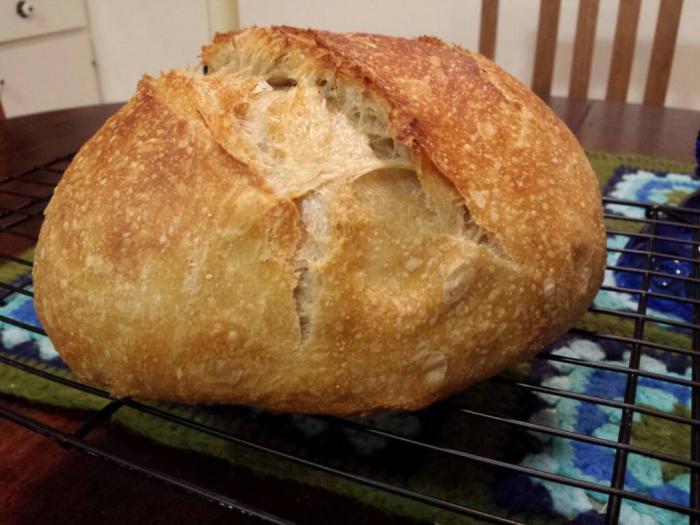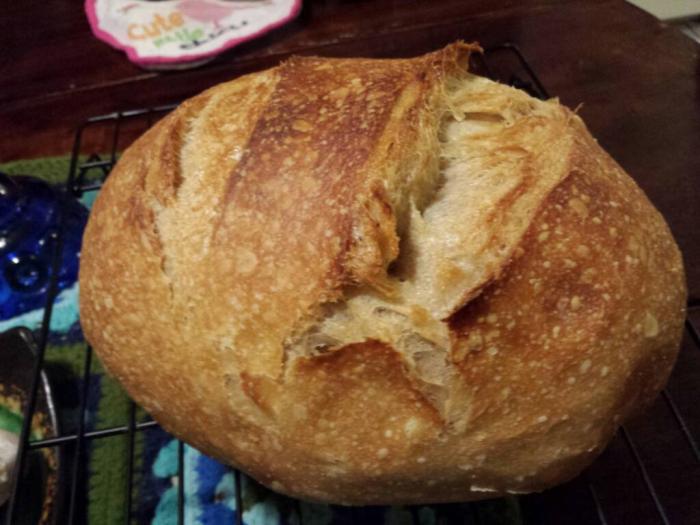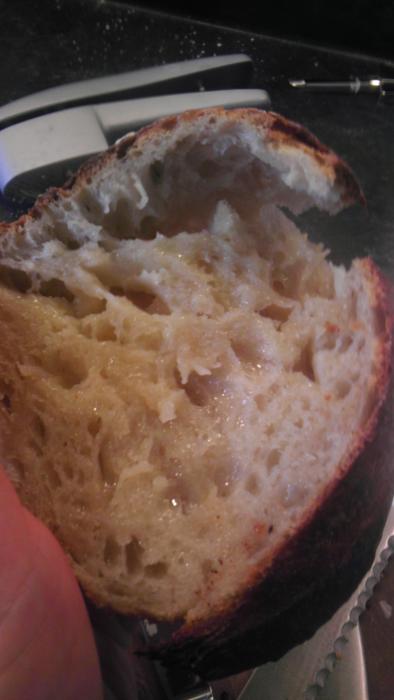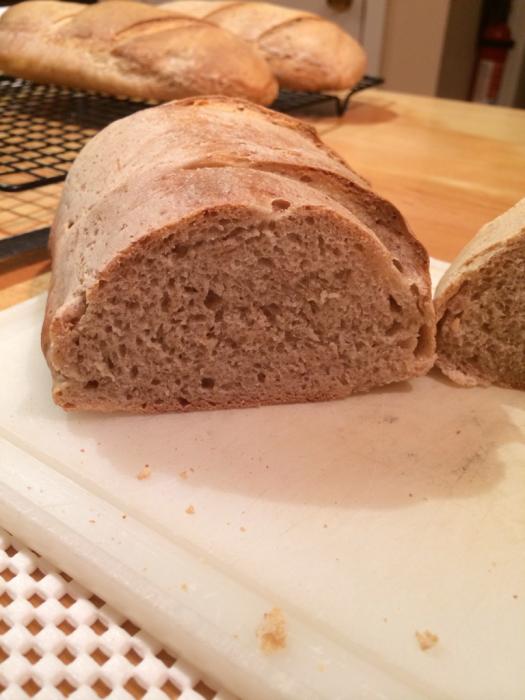Does anybody have any tips for making softer bread? The loaf of wheat bread I made yesterday is super tough.
Tough as in dense?

Does anybody have any tips for making softer bread? The loaf of wheat bread I made yesterday is super tough.
Tough as in dense?
Yes, tough, chewy.
Does anybody have any tips for making softer bread? The loaf of wheat bread I made yesterday is super tough.
Either add egg or fat
Sent from my iPod touch using Home Brew
Is there a healthy way to make it softer?
how long are your rises? How much yeast are you using?
Whole grain it going to produce a denser loaf, If you want more control ditch the machine
White whole wheat works quite well and keeps the whole grain goodness, using a good white bread flour as some of the bill works wonders, Increasing the moisture in the recipe helps to develop pockets also.
An egg in a loaf isn't going to kill you and the fat will make the bread stay fresh longer.
I use a lot of whole grains in my breads and I have produced a lot of dense loafs, as with any thing else it takes practice.
Hope this helps.




Is there a healthy way to make it softer?

Had good oven spring, just in the wrong place.I second the depth of the slash.
I sure it tastes delicious just the same!
So, you proof the bread in a banneton, then transfer it to you baking surface? How does it hold the shape of the banneton? How do you get it out of the banneton, flip it?
The peel in my picture is a Superpeel:
http://www.superpeel.com/
I place the inverted peel over the banneton and flip both over, releasing the loaf. The Superpeel makes it quite easy to transfer the loaf to my baking stone.
I bought the Superpeel for transferring pizzas to the stone, though I end up using it more for bread than anything.
I first heard about the Superpeel from breadtopia.com when I was first starting to make bread via the no-knead process. That site has plenty of cool gadgets and tools.
So, you proof the bread in a banneton, then transfer it to you baking surface? How does it hold the shape of the banneton? How do you get it out of the banneton, flip it?



What are you guys using to score the dough?



Moved a couple loaves through tonight... ChefRex levain, 78% hydration, 10% whole wheat. DelishView attachment 189761View attachment 189762View attachment 189763
Sent from my iPhone using Home Brew
Beautiful loafs!
What are you guys using to score the dough?
Wow, I'm just now viewing those pictures I uploaded from my mobile on my desktop, and that formatting is really crappy. I wonder if there's anything I can do to improve on that.
I don't know--the loaves look killer to me. The crumb looks amazing.
You mind sharing your formula and baking technique? Curious to see where I can improve.
Enter your email address to join: